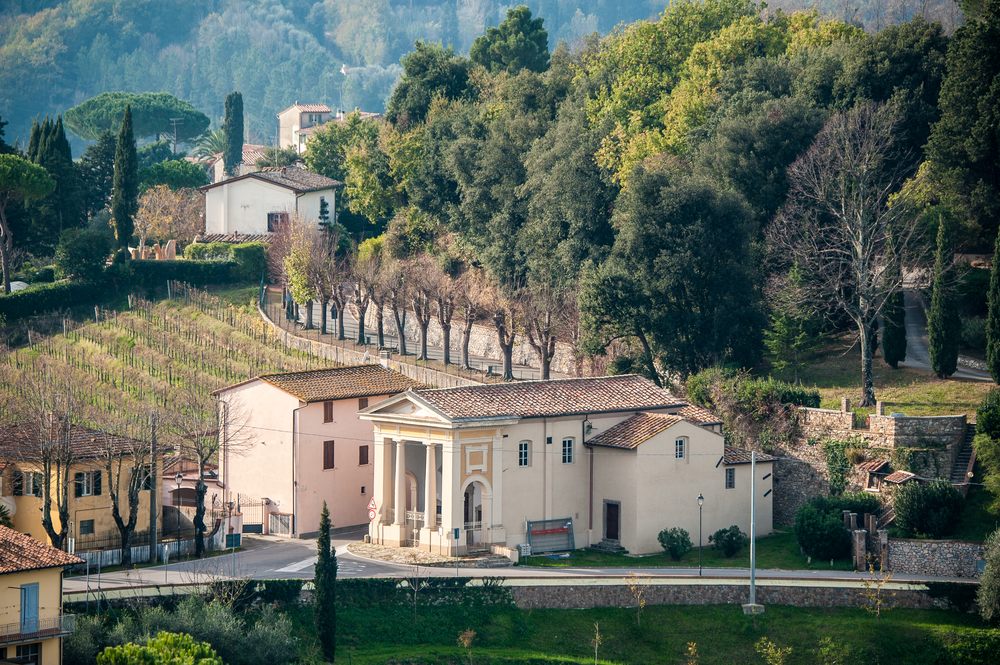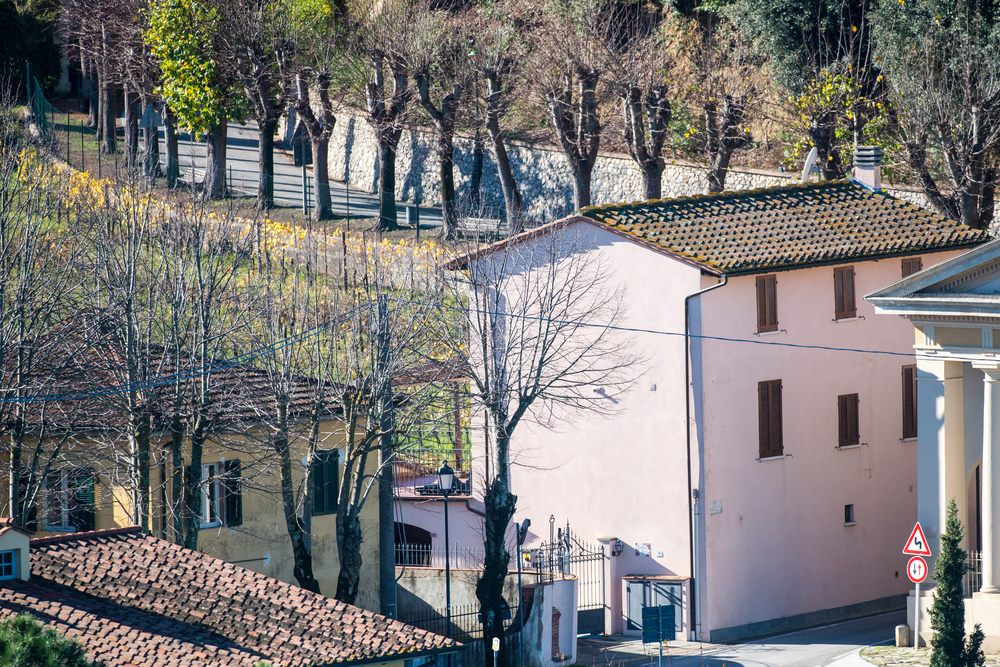The establishment of “Viali della Rimembranza” (Avenues of Remembrance) was one of the initiatives undertaken at the end of WWI to remember and commemorate the numerous casualties of the war. According to the regulations established by the government in 1922, each district was free to interpret the theme as seen fit, starting from the choice of the street along which to plant trees. Among those still without a name, as per the regulation, the street that entered Lari and passed by the oratorio of the Madonna della Neve (one of the most dear places of popular devotion) and the placed known as “dei morti” (of the dead), a grove of olive trees where the victims of the 1632 plague were buried, was chosen. In this manner, they made use of places that were already near and dear to the population, moreover for reasons that were not too dissimilar.
The idea to plant trees wasn't entirely new, given that often men about to leave for the battlefront would plant trees. They did so to create a bond with the place that they were to leave behind, and thus bring good auspices for their return, but also as a tangible support for those who remained. Indeed, in Lari and elsewhere, mulberry trees were often planted, which women and children who stayed behind could use to raise silkworms, thus able to create some sort of financial support capable of replacing, in some way, the arms of men.
The choice of tree to be planted in Lari was also unusual, provided for by the mandatory rules established by the government, but not common in this part of Italy. Instead of towering cypresses, heroic oaks or glorious bay trees, dozens of lindens were planted. Bare in winter but covered in fragrant flowers in the start of summer, these plants, among other things, originate from the areas in which those who never made it back home were buried.


